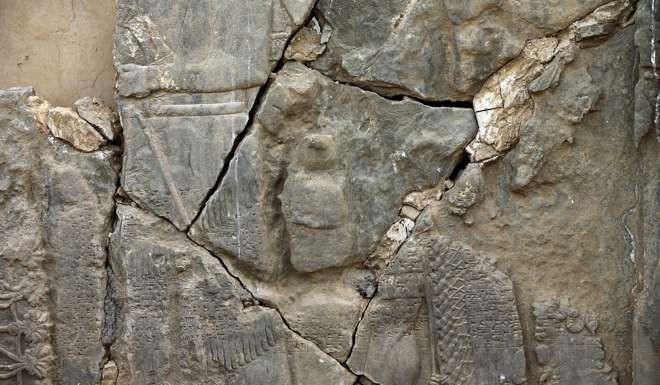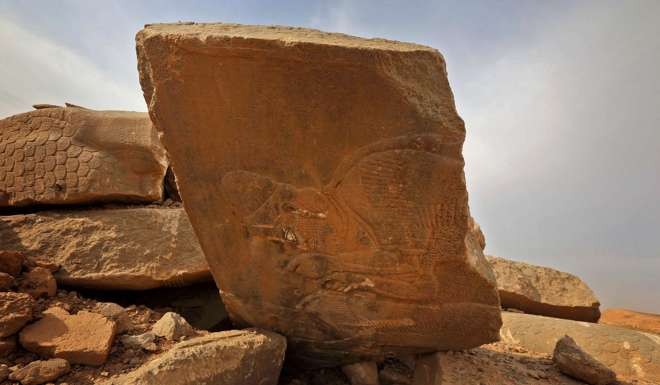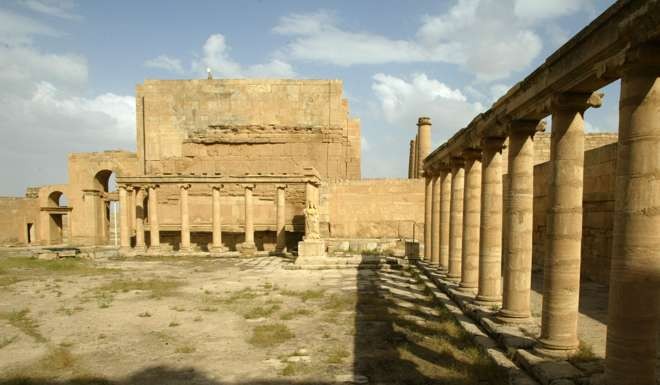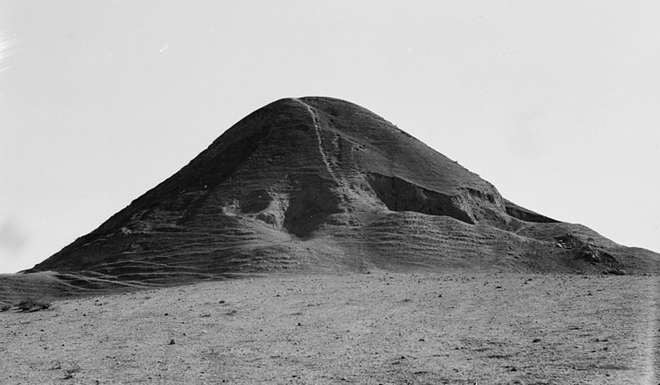
Nimrud stood as a treasure of civilisation for 3,300 years. Islamic State vandals have smashed it to bits
Nearly a month into the fight to retake Mosul, government forces pushed Islamic State militants out of nearby Nimrud, home to some of Iraq’s richest archaeological treasures. And when soldiers finally surveyed the extremists’ destruction of the ancient sites, one said that those who carried it out “don’t have a place in humanity.”
Intricate reliefs that once stood at the gates to the magnificent Assyrian palace lay in pieces: stone carvings of a face, half of a claw, part of a wing, fragments of script.

Iraqi officers accompanied journalists to the site Wednesday, wandering through the piles of rubble and snapping photos of the damage that UN officials had once called “a war crime.”
This was done by people who don’t have a place in humanity
The Assyrian Ziggurat, nearly 3,000 years old and once one of the tallest surviving buildings of the ancient world, has been leveled. On palace walls, only small fragments of stone carvings remained. Two Assyrian winged-bull statues that once marked the palace entrance have been completely destroyed. In a palace doorway, four deep cracks defaced a large carving of an Assyrian guardian spirit.
“I didn’t cry when Daesh destroyed my home, but I really cried when I saw the video of them destroying this site,” said Sheikh Khaled al-Jabouri, a tribal fighter from the Nimrud area. “These ruins are not just important to the people of this area, but to all of Iraq.”

“This was done by people who don’t have a place in humanity,” said Major General Dhiaa al-Saadi, the deputy commander of Iraqi ground forces, as he surveyed the ruins.
Shortly after portions of the site were excavated in 1845, some carved slabs and massive statues were removed and sent to the British Museum in London where they remain to this day. The Iraqi national museum in Baghdad also houses winged bulls from the Nimrud site.
Army Sgt. Maj. Marwan Abbas said he had last been at the site when he was a teenager during a school trip from Baghdad, and seeing its current state broke his heart.
“Before 2003, all Iraqis would come here for school picnics,” Abbas said, describing how in the spring, the site was surrounded by green fields. Such trips were cancelled, he added, after the security situation deteriorated following the 2003 US-led invasion that toppled Saddam Hussein.


“We have information that all of the archaeological places in Mosul have already been destroyed,” al-Saadi said.
Archaeologists and government officials have yet to visit the site to conduct a proper assessment, according to Iraqi officers at the scene.
Al-Jabouri, the local tribal fighter, said he doesn’t believe any amount of restoration can repair what’s been lost.
“But we’ve heard that only 30 per cent of this site has been (properly excavated),” he said, “so maybe there is more still beneath the ground.”

